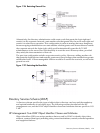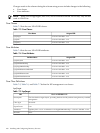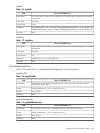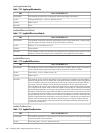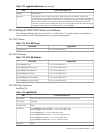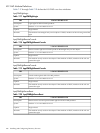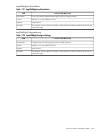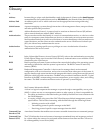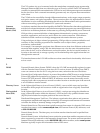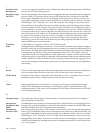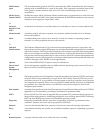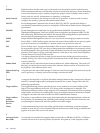
Glossary
A
Address
In networking, a unique code that identifies a node in the network. Names such as host1.hp.com
are translated to dott-quad addresses such as 168.124.3.4 by the Domain Name Service (DNS).
Address Path An address path is one in which each term has the appropriate intervening addressing
association.
Administrator A person managing a system through interaction with management clients, transport clients,
and other policies and procedures.
ARP Address Resolution Protocol. A protocol used to associate an Internet Protocol (IP) address
with a network hardware address (MAC address).
Authentication The process that verifies the identity of a user in a communication session, or a device or other
entity in a computer system, before that user, device, or other entity can access system resources.
Session authentication can work in two directions: a server authenticates a client to make access
control decisions, and the client can also authenticate the server. With Secure Sockets Layer
(SSL), the client always authenticates the server.
Authorization The process of granting specific access privileges to a user. Authorization is based on
authentication and access control.
B
Bind In the Lightweight Directory Access Protocol (LDAP), refers to the authentication process that
LDAP requires when users access the LDAP directory. Authentication occurs when the LDAP
client binds to the LDAP server.
BIOS Basic Input/Output System. System software that controls the loading of the operating system
and testing of hardware when the system is powered on. The BIOS is stored in read-only
memory (ROM).
BMC Baseboard Management Controller. A device used to manage chassis environmental,
configuration, and service functions, and receive event data from other parts of the system. It
receives data through sensor interfaces and interprets this data by using the sensor data record
(SDR) for which it provides an interface. The BMC also provides an interface to the SEL. Typical
functions of the BMC are measuring processor temperature, power supply values, and cooling
fan status. The BMC can take autonomous action to preserve system integrity.
C
CIM See Common Information Model.
Client A client is a logical component that manages a system through a manageability access point
(MAP). A client can run on a management station or other system. A client is responsible for:
• Providing an interface to the functionality provided by the MAP in a form consistent with
the SM architecture
• Accessing a MAP using one of the SM CLP architecture defined management protocol
specifications. This involves interacting with the MAP through the following actions:
— Initiating a session with a MAP
— Transmitting protocol-specific messages to the MAP
— Receiving protocol-specific output messages from the MAP
Command Line
Interface (CLI)
A text-based interface that enables users to enter executable instructions at a command prompt.
Command Line
Protocol (CLP)
The CLP defines the form and content of messages transmitted from and responses received
by a client within the context of a text-based session between that client and the CLP service
for a Manageability Access Point (MAP).
187



